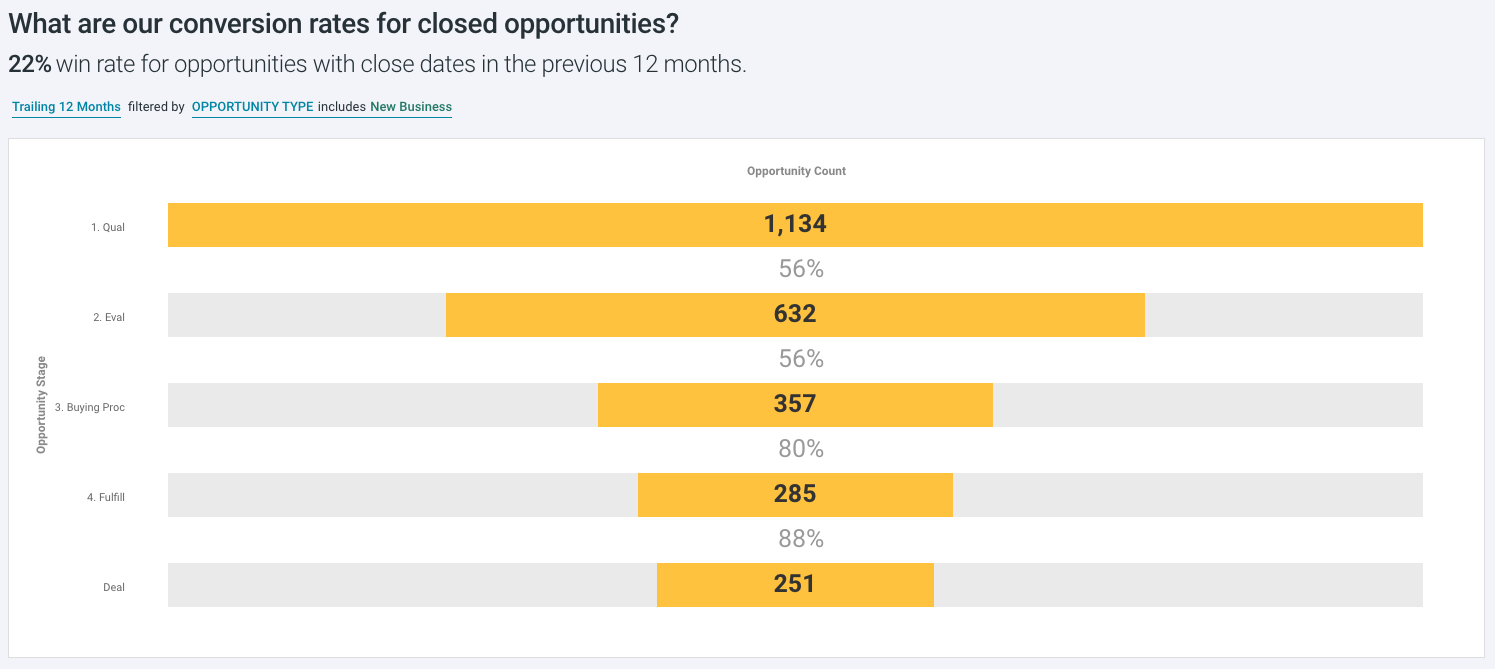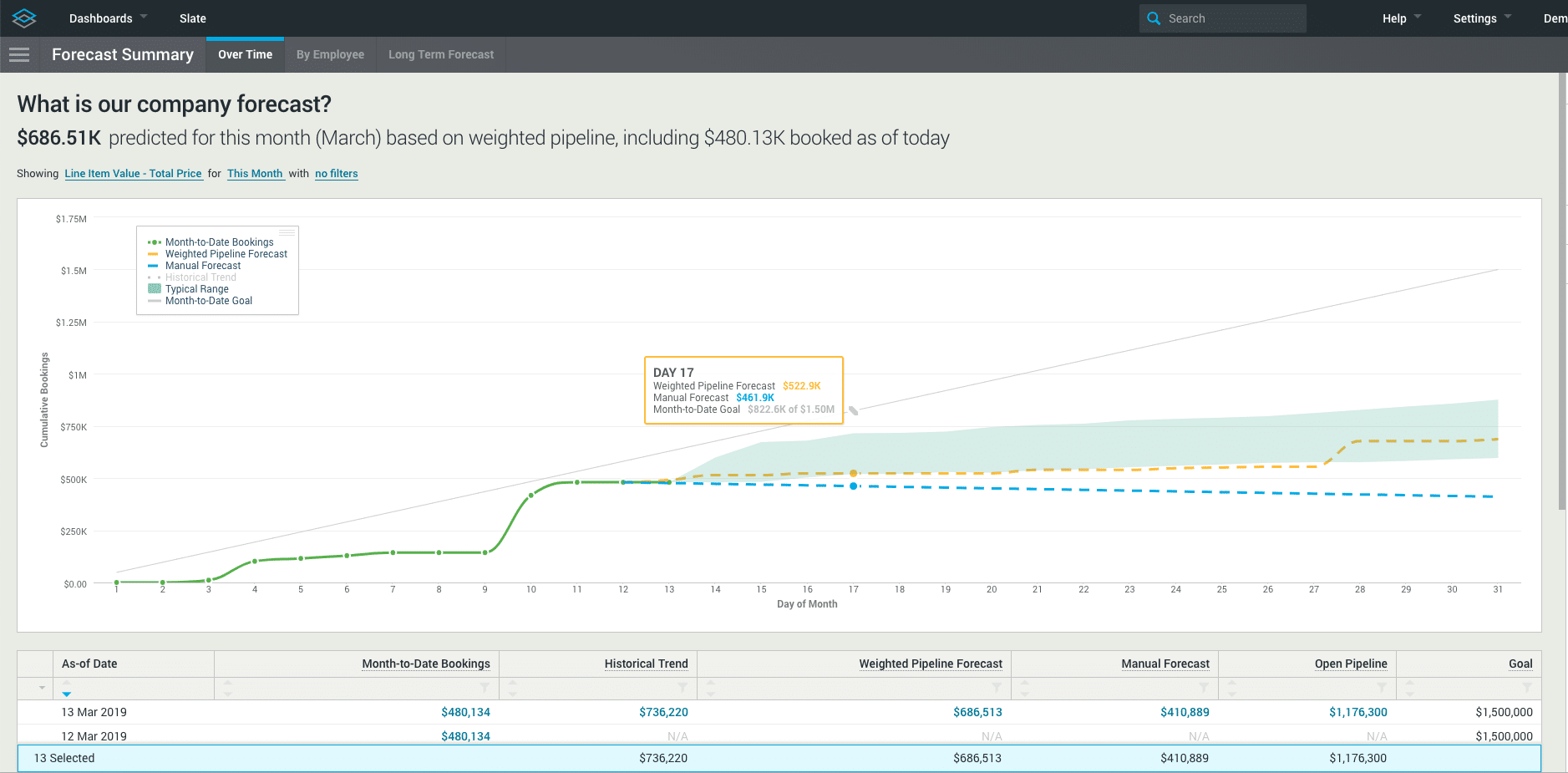Falling short of your goal is one thing. Falling short of your quarterly goal after telling your CEO that you will definitely hit your goal?
Well, that’s a different level of egg-on-your-face altogether.
That type of scenario is simply mortifying if you’re a Sales VP, suggesting to the CEO or board of investors that you really have no idea what the heck you’re talking about, or what you’re doing. That’s not a good look. Yet, it’s something that you will have to suffer the ignominy of over and over again…as long as your sales forecasts remain inaccurate and off-base.
So why exactly are your sales forecasts never accurate? More importantly, what can you do to turn that ship around? While it can be challenging to diagnose why your forecast is off, it’s not impossible. The best way to start is to individually consider the three areas that factor into a forecast: your reps, your process, and your data.
Each of those areas contains the potential to seriously affect your sales forecast. If any of the following scenarios sound like your current forecasting process, then the bad news is you’re setting yourself up to repeatedly deliver inaccurate forecasts. However, the good news is you’ve identified a problem and are one step closer to establishing a more accurate forecasting technique. Read more about data-driven forecasting methods here.
Why Your Reps are Throwing Off Your Forecast
I have some bad news for you: Your sales reps are lying to you.
And, ok, I have even more bad news for you: It’s your fault.
Why are your reps lying to you? And how is it your fault? It starts with how you ask them to predict which opportunities they’ll close each month.
The job of a sales rep is to approach every opportunity as if they’re going to win it. Like soldiers on the front line, closing reps are trained to be aggressive, optimistic and confident. This helps them passionately work every opportunity instead of disqualifying opportunities they’re on the fence about.
The downside is that it gives them happy ears: they believe they’ll close many more deals than they actually will. Then, when you meet with them to discuss which of their open opportunities will close, they’re all rosy and bullish.
Or it’s just the opposite.
Not wanting to come up short of their quota, your reps will sandbag and hem and haw about the opportunities in their pipelines. “Oh, that one probably won’t close,” they’ll tell you. Then, at the end of the quarter, when the deal comes in, it’s a welcome surprise. And everyone’s happy. Especially you, their manager.
But everyone shouldn’t be happy. Your goal is to forecast accurately, not to overshoot implausibly low expectations.
Either way, your reps’ thumbs-up-or-thumbs-down should not be how you make your forecasts. In the long run, this strategy will lead to unpredictable quarters and forecasts that are wildly off.
Why Your Sales Process is Throwing Off Your Forecast
First and foremost, one of the most effective ways to ensure an inaccurate forecast is by having an ill-defined sales process. It is essential to have a clearly defined sales stages and evident criteria to determine what stage an opportunity should be in and how that opportunity moves from one stage to the next. Without this organized structure, it’s much easier for reps to manipulate where they think an opportunity should exist which leads to an inflated or flawed pipeline.

Once you have a clear outline for your sales process, the best way to maintain a well-scrubbed pipeline, vacant of opportunities that can negatively affect your forecasting accuracy, is to assert inspectability and require MANAs (mutually agreed upon next actions).
Inspectability in your sales process means that at every opportunity, there is a system of checks and balances, of validation and confirmation, from the prospect that he is indeed ready to transition to the next sales stage. This ensures that opportunities belong in the right stage and will go a long way toward improving your sales forecasting accuracy.
This also serves the twin benefits of putting your reps firmly in the shoes of the potential buyer, while also instilling discipline and rigor in their individual sales process by requiring clear next steps. After each phone conversation, your reps should send an email confirming what was said in the conversation and include clear, mutually agreed upon next steps. Remember that each stage has its own set of exit criteria to be independently confirmed and corresponding MANAs, for example:
- At stage 1, the inspection will look for, “The prospect confirmed and validated her problem, and has a specific need to solve this problem.”
- MANA: Rep confirmed date and time with the prospect to hold a product demo.
- At stage 2, the inspection will look for, “The prospect confirmed that after seeing our product demo, she sees a solution and has a timeline for when she wants to solve this problem.”
- MANA: Rep confirmed date and time for a follow-up to discuss the timeline for presenting a business case to other key personas in the prospect’s company.
An organized sales process with well-defined sales stages, inspectability between stages and required MANAs will help create a healthy pipeline. It is essential to have a clean pipeline otherwise your forecast is susceptible to inflated opportunities, inaccurate close dates, and an over-reliance on human judgment (which as outlined above, should not be trusted).
Why Your Data is Throwing Off Your Forecast
The biggest issue when it comes to how your data could be throwing off your forecasting accuracy is that you’re not using enough of it. Extracting historical data about all facets of your sales process is challenging, but, if you’re not considering the following data points, it is nearly impossible to ensure a repeatable, precise forecast.

Essential historical data you should be considering include:
- Opportunity size
- Opportunity stage
- Opportunity age
- Rep-specific win rate
- Close date pushes
Together, these pipeline data points will give you a reliable metric for evaluating the individual open opportunities in your pipeline. But the key is that it doesn’t just give a binary “yes” or “no” answer, but instead a much more useful indication of how likely it is to close-won and, relatedly, how much revenue you can expect it to contribute to your bookings total. In aggregate, these “expected contributions” combine to give you a much more accurate bookings forecast than simply adding up the opportunities that your reps ‒ tainted by happy ears, sandbagging tendencies, ill-defined sales processes or just a lack of correct data and information ‒ feel like they’ll close.
If you’re relying heavily on your reps intuition, don’t have a clearly defined sales process complete with a well-scrubbed pipeline or aren’t considering enough historical data points then it is incredibly unlikely you’re forecasting inaccurately…
“So, how can I start incorporating data-driven forecasts at my own business?”
Even if you know and understand all of the information explained above, you may still be wondering exactly how you can start using data-driven forecasts for your own sales team.
Luckily, we’re here to help.
We have a comprehensive eBook on building a data-driven sales forecast for your own sales team. We talked to a lot of sales leaders to come up with this eBook, so we’re confident that it will be a really valuable resource for sales managers and their sales teams.
And best of all? It’s FREE.
Download the eBook here and let us know if it helped you transform your forecasts.
Want to learn more about how InsightSquared can help you forecast more accurately? Get in touch with us here.
